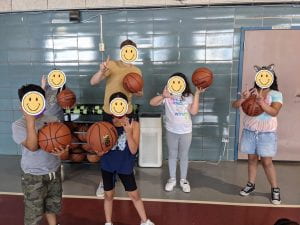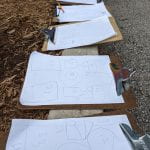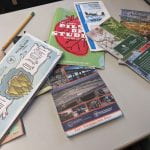
How Summer School Re-kindled My Love of Teaching
For the first time in my 15 years teaching career, I decided to teach summer school. I was leery about taking on the extra work when I should be unwinding, but I could not be happier with my decision. It was a total breath of fresh air that reminded me of why I started teaching in the first place. It might sound counterintuitive but taking on more responsibilities helped me remember why I started teaching in the first place.
![]()

March 2020 to June 2021 was just 15 months but felt like it could have easily been 15 years. Teachers all across the country were feeling stressed and the dual workloads of in-person, remote, and/or concurrent learning were leading to articles claiming that Teachers Are Reaching their Breaking Point. So when summer vacation rolled around most teachers bolted for the exit and didn’t look back. So what made me stay? The fact that so many teachers were at a point where they were unwilling to take on extra responsibilities was one of the reasons I ended up teaching summer school, to begin with. The music teacher isn’t typically who you think of but I actually have a Type 03 (gen-ed) certificate with a music endorsement. At one point I wanted to be a classroom (homeroom) teacher and after this experience, I totally remembered why. Summer school offered a new fresh perspective on what I had been doing for the past 15 years and reminded me of how wonderful teaching can be when a few aspects of the traditional classroom change for the better. I’m talking about smaller class sizes, freedom in both what and how I teach, and allowing for “non-academic” student play time as well.
Independence in Instruction
I want to start with what would be the biggest change for most teachers.; no curriculum. Yes, there were standards and goals for the students, computer programs with minutes to meet, but there was no set way to approach them. We explored and played in so many fun ways combining multiple subjects and concepts into interactive projects and activities that made our mornings fly by. For example; we spent an entire day talking about maps, measuring maps, making maps, sharing maps, it was all maps maps maps! You might think focusing on the same thing for hours might be boring but when you have the freedom to structure and pace your lesson, as well as a flexible learning environment, it can be incredibly engaging. Plus we checked off so many content boxes with this lesson: social studies, math, reading and writing, directions, even a little physical movement!
I have a background in Project-based Learning and have a Master’s degree in Inquiry Learning (MSTI) and so I was excited to get back to planning these large thematic action projects. Here is the briefest overview of my map-making project.
A Map Making Interactive Project:
- Engage: Why would someone need a map?
- Connecting to maps in video games (Fortnite) and share real-world maps (Six Flags)
- Using a map of a theme park to talk about what rides we’d go and drawing out routes.
- Then sharing with friends using the map to describe their actions.
- Study: Making and Measuring Map
- What are the important parts of the map?
- If we were going to make a map (treasure map?) what would we need to know?
- Important concepts like scale, measurement, directions, etc.
- Activate: Treasure Hunt
- Take class out to the playground, park, blacktop, etc.
- Make a map on paper and clipboard (we measured the map using steps)
- Pick a treasure (from my prize bin) and hide it! (no peeking)
- Write the instructions using your map as a guide.
- Switch with a classmate and using their map find your partner’s treasure
Download Powerpoint HERE: https://asoundmind.edublogs.org/files/2021/08/Maps.pptx
Non-Academic Learning (aka PLAY)

Basketball Club
My favorite part of Summer School was the schedule. 9-12 was classroom learning, typically what you think of as summer school (or not so typical if you read what we did above) but after a break for lunch, students had “clubs” from 12:30 – 3. For me, this was the biggest success. After a year of remote learning and distancing norms, I just wanted to see kids being kids again. This “non-academic” time was perfect for socializing, playing, and building relationships. I keep putting “non-academic” in quotes because I really feel like this particular chuck of time was invaluable to learning and labeling it as such diminishes its value. In fact, I have a whole post about “The Lessons my Students Learning from Dungeons and Dragons.” Students had access to ukulele, basketball, recycled art, walking clubs, and board games. Although they technically signed up for specific clubs, as the summer went on students began to choose which one they attended each afternoon. This freedom and agency really helped generate buy-in and give students a sense of ownership in their own learning. You might think they’d choose basketball every day, and while it was the most popular, all clubs were #trending at some point. After sitting at desks 6-feet apart, and staring at computer screens for 15 months it was so refreshing to see students playing and being creative with this time. There were so many variations of ball games invented, interactive art, and the story and characters from the D&D game were literally turned into a short animation by a talented 8th grader. I honestly couldn’t believe how much each student gained from this time in both confidence, exercise, socializing, and joy!
Small Class Sizes
This is last but not because it’s least, but because it’s obvious and something that teachers have been pleading about for years. I live and work in Chicago which has an average class size of 29 students, but in my school, I know that some as are large as 33 and a report found more than 50 classes in the city that topped 37! I’ll be brief here because there is so much literature already available discussing this point, but research shows that students in smaller classes perform better in literally every single subject area. The bottom line is that I could NOT have taught the way I did with a larger class. My projects and lessons simply wouldn’t have had the time or space to develop in the way that they did. All of the reasons above which I discuss the freedom and joy I experienced were made possible by my small class of 12-15 students. This is part of a larger issue about equitable funding for education where schools are paid per pupil and therefore need to fill every class and grade to capacity. That cannot be solved here, but as a 15-year teaching veteran having a small class that I could work with consistently for even a few weeks made my heart soar. After back-to-back years of disrupted and disorganized teaching, being able to return to my roots with an idyllic summer school experience helped rekindle my love of teaching and reminded me why I got into the profession in the first place.



